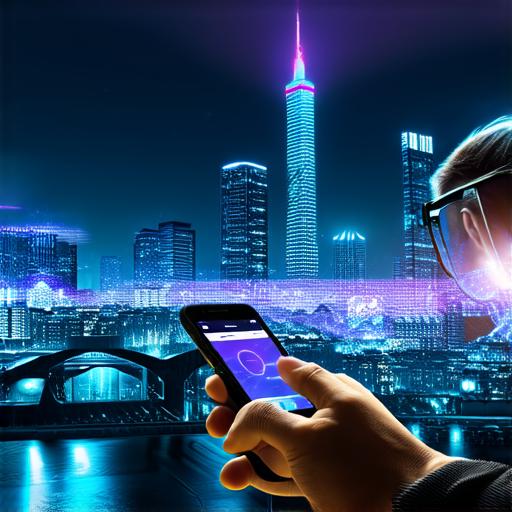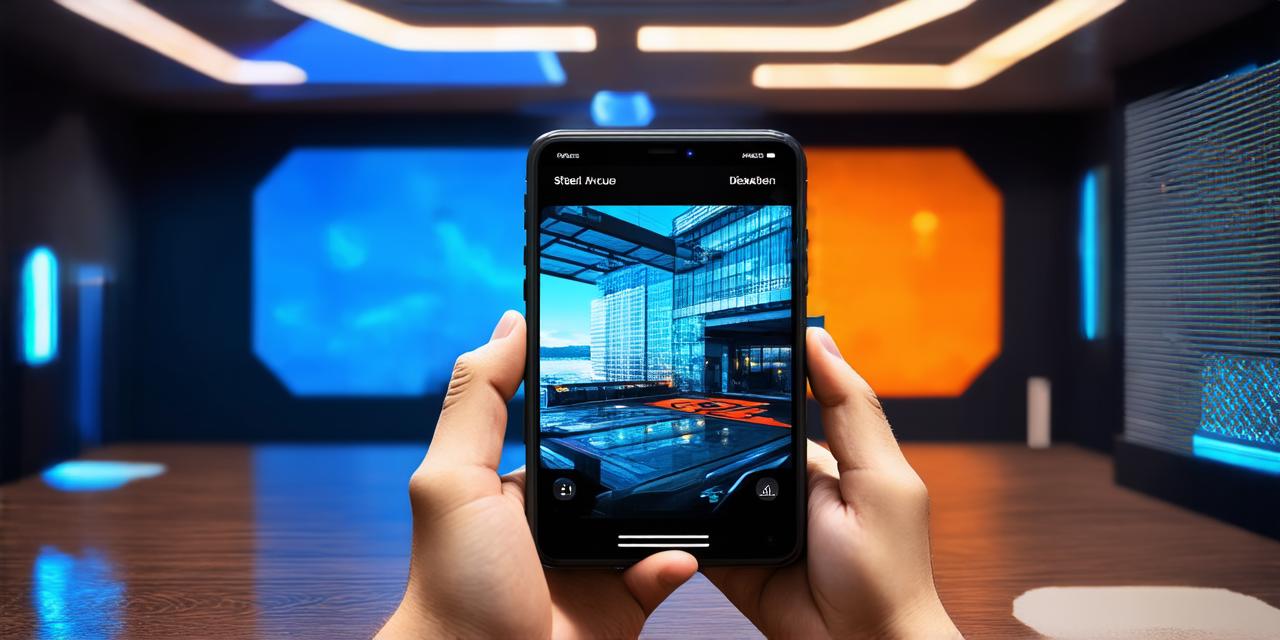Augmented reality (AR) is a rapidly growing technology that allows users to experience virtual objects and information in the real world. As the demand for AR applications continues to grow, so does the need for effective development frameworks. In this article, we will explore some of the best augmented reality development frameworks available for building AR applications.
1. ARKit
ARKit is a powerful AR development framework developed by Apple. It provides developers with a wide range of tools and features to create immersive AR experiences. One of the key benefits of ARKit is its integration with Apple’s devices, including iPhones and iPads. This allows for seamless integration with Apple’s ecosystem and easy access to Apple’s resources.
ARKit also provides a number of advanced features, such as scene tracking, object recognition, and depth sensing. These features allow developers to create highly interactive and engaging AR applications that can be used in a variety of industries, including education, entertainment, and healthcare.
One example of an ARKit application is the popular Pokémon Go game. This game uses ARKit to bring virtual Pokémon creatures to life in the real world, allowing players to catch and battle them in their surroundings.
2. Vuforia
Vuforia is another popular augmented reality development framework that provides developers with a wide range of tools and features for creating AR experiences. It supports multiple platforms, including iOS, Android, and Windows, making it easy to develop applications that can be used across a variety of devices.
Vuforia also provides advanced features such as object tracking, image recognition, and 3D modeling. These features allow developers to create highly immersive and interactive AR experiences that can be used in industries such as marketing, education, and entertainment.
One example of a Vuforia application is the popular IKEA Place app. This app uses Vuforia to allow users to visualize furniture in their home before making a purchase, providing them with a better understanding of how the furniture will fit and look in their space.
3. Wikitude
Wikitude is an augmented reality development framework that provides developers with a wide range of tools and features for creating AR experiences. It supports multiple platforms, including iOS, Android, and Windows, making it easy to develop applications that can be used across a variety of devices.
Wikitude also provides advanced features such as object recognition, image tracking, and 3D modeling. These features allow developers to create highly immersive and interactive AR experiences that can be used in industries such as marketing, education, and entertainment.
One example of a Wikitude application is the popular Aurasma app. This app uses Wikitude to allow users to see augmented reality content overlayed on top of the real world, providing them with a unique and engaging experience.
4. ARToolKit
ARToolKit is an open-source augmented reality development framework that provides developers with a wide range of tools and features for creating AR experiences. It supports multiple platforms, including iOS, Android, and Windows, making it easy to develop applications that can be used across a variety of devices.
ARToolKit also provides advanced features such as object recognition, image tracking, and 3D modeling. These features allow developers to create highly immersive and interactive AR experiences that can be used in industries such as marketing, education, and entertainment.

One example of an ARToolKit application is the popular Snapchat app. This app uses ARToolKit to allow users to add augmented reality filters and effects to their photos and videos, providing them with a fun and engaging way to share their experiences with others.
FAQs
1. What is the difference between AR and VR?
Augmented reality (AR) and virtual reality (VR) are both immersive technologies that allow users to experience virtual objects and information in the real world. However, AR overlays digital content over the real world, while VR creates a completely artificial environment for the user to explore.
2. Which platform is best for developing AR applications?
The choice of platform for developing AR applications will depend on the specific needs of the project. Apple’s iOS and Google’s Android are both popular platforms for developing AR applications, as they have a large user base and provide developers with a wide range of tools and features.
3. What are some common features of AR development frameworks?
Common features of AR development frameworks include scene tracking, object recognition, image tracking, and 3D modeling. These features allow developers to create highly immersive and interactive AR experiences that can be used in a variety of industries.
4. How do I choose the right AR development framework for my project?
When choosing an AR development framework for your project, you should consider factors such as the specific needs of your project, the platform(s) you want to support, and the level of expertise you have with the framework. You may also want to consider the community support and resources available for the framework, as well as any licensing or cost considerations.
Conclusion
Augmented reality is a rapidly growing technology that has the potential to revolutionize many industries. As the demand for AR applications continues to grow, so does the need for effective development frameworks. In this article, we have explored some of the best augmented reality development frameworks available for building AR applications. By choosing the right framework for your project and using it effectively, you can create highly immersive and engaging AR experiences that will captivate and inspire your users.
